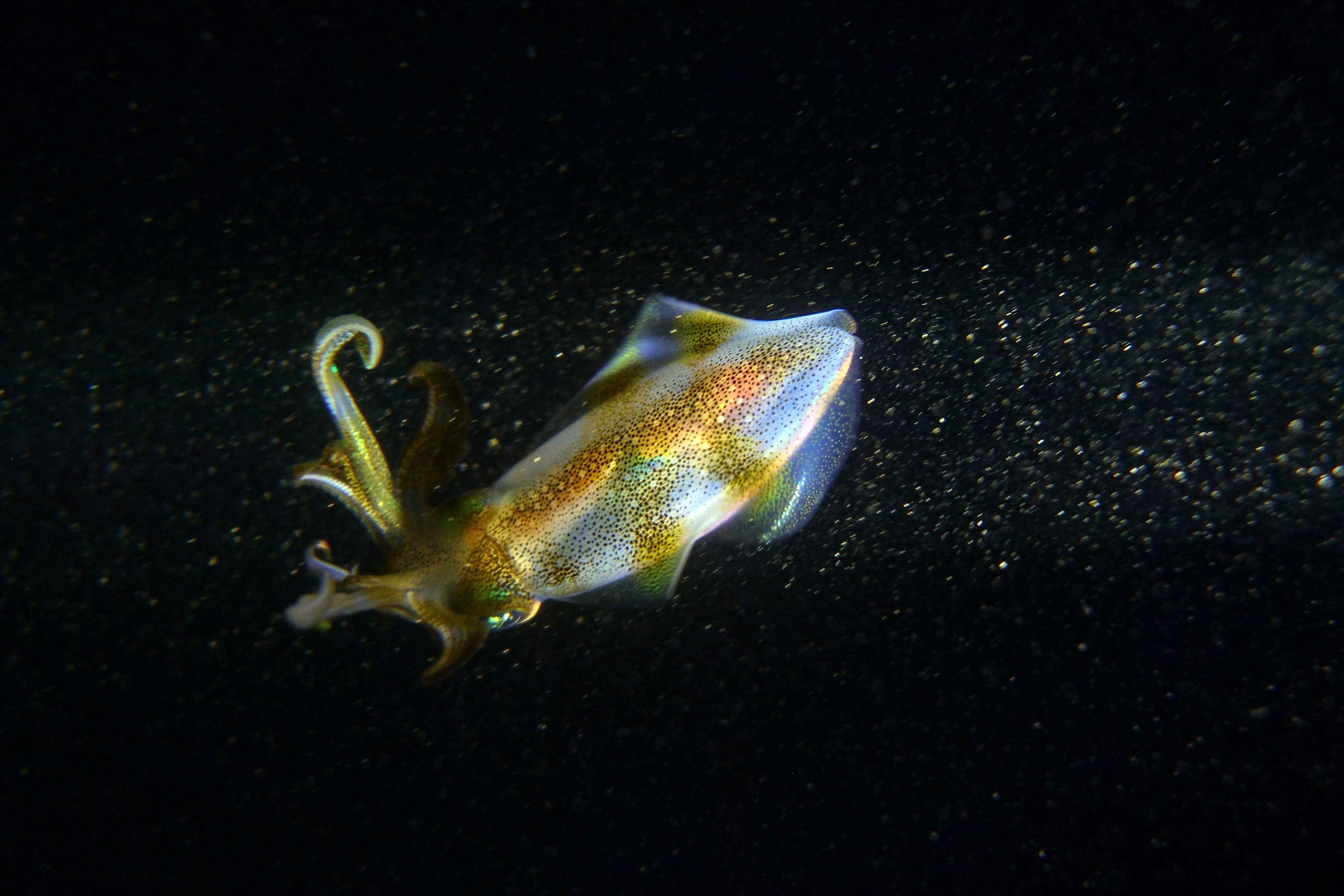Scientists find world’s deepest-swimming squid ever 6km under water
Findings suggest some squids and octopuses may live in deep, dark ocean trenches closer to the sea floor

Researchers looking for the wrecked remains of a Second World War destroyer ship have instead found the deepest-dwelling squid ever recorded swimming about 6km below sea level.
The bigfin squid, spotted swimming about 6,212m (20,380 ft) under the Philippine Sea just above the ocean floor, has become the deepest-swimming squid known to humans, beating the record of another squid discovered about 4.7km below the Pacific Ocean.
Researchers, including Alan Jamieson from the University of Western Australia, also found four cirrate octopuses during the dive.
This was the second time the octopuses, which have fins, had been observed at depths between 6,212m and 6,224m.
The scientists, however, said the octopuses did not appear to be the same species as those found earlier in the Java Trench near Indonesia.
Their findings, described in the journal Marine Biology last month, suggested that some cephalopods – a group that includes squids, octopuses and cuttlefishes – may live in the deep and dark ocean trenches.
The new discovery was made when the researchers were hunting for the wreckage site of US navy destroyer USS Johnston, which sank during the Battle of Leyte Gulf in 1944.
Some parts of the destroyer were earlier discovered in 2019, but positive identification of the vessel was made only last year in what is still the deepest shipwreck ever found.
The researchers spotted the lone bigfin squid swimming close to the seafloor while probing the ocean floor for more of the ship’s wreckage using a crewed deep-submergence vehicle known as “The Limiting Factor”.
This new discovery has increased the depth range known for squids by over 1,400m – an increase of about 30 per cent compared to previous findings.
“These observations extend the known hadal occurrence of cirrates, and cephalopods in general, from the Indian Ocean to the equatorial North Pacific Ocean, suggesting that their global presence in depths > 6000m may be more extensive than previously recognised,” the researchers wrote in the study.
The hadal zone is the deepest region of the ocean, lying in oceanic trenches from a depth of about 6,000 to 11,000 metres.
Very few marine organisms exist at these depths and ones that have been found to exist often have special adaptations to live in these dark parts of the sea.
In the study, researchers also raised questions about how the cirrates have physiologically adapted to living at depths ranging from 1-6km, where the atmospheric pressure can be up to 600 times more than at sea surface level.
This article was amended on 9 February 2022. It previously inaccurately referred to the cirrate octopuses measuring between 6,212m and 6,224m. These figures, however, represent the depths between which the animals were seen.
Subscribe to Independent Premium to bookmark this article
Want to bookmark your favourite articles and stories to read or reference later? Start your Independent Premium subscription today.

Join our commenting forum
Join thought-provoking conversations, follow other Independent readers and see their replies